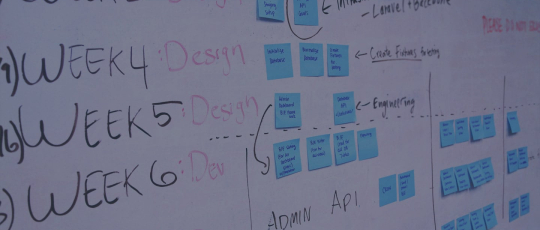
However, new products rarely make it to the consumer. According to McKinsey research, 50% percent of new product launches do not reach their targets.1 So why do only half meet their goals?
Why is new product introduction (NPI) so hard?
NPI is difficult for a variety of reasons. Launching a product becomes even more challenging when there is a lack of unrealized resources, poor preparation, and bad communication.
Starting the process of turning a product concept into an idea is the exciting part. With development platforms and readily available design support, such as white papers and reference designs, getting a product eighty percent of the way to finished has never been easier.
However, closing the gap on the last twenty percent is pivotal in getting a product to market in a timely manner.
The last 20% of the way often requires specialists with in-depth knowledge of specific processes and technologies. Depending on the size of your team, you may be thin in human resources or experience. You can help offset some of these areas by selecting an EMS provider with experience in your product type who can help fill the gaps.
Compounding this issue, Salesforce CEO Marc Benioff says, “speed is the new currency of business.”2 While this may be true overall, speed in new product introduction could be a pitfall. If you attempt to move too quickly, important steps may be overlooked costing time and money.
Many new product introduction plans often overlook the NPI version of Pareto’s Principle: the last twenty percent of the development requires eighty percent of your time and effort. A well-planned product development timeline is necessary to meet your goals.
the last twenty percent of the development requires eighty percent of your time and effort
Your new product introduction timeline should consider all details, even the seemingly small ones. Events such as design for manufacturability reviews with your EMS provider, setting up testing and programming rigs, and completing all the necessary certifications need to be included.
Your timeline should then be published and communicated to your team early and often. This will help prevent eager executives or over ambitious sales people to over promise deliverables or attempt to boost stock prices.
Finally, the deeply technical and interdependent nature of getting a product to market requires constant communication across many fronts and swift decision-making processes.
Often times, customers decision-making matrix crosses not only departmental borders but also physical borders. This can add to the difficulty of getting a product to market.
It is pivotal in saving time and money by making sure all the relevant decision makers regularly discuss any changes and updates. Even the smallest adjustments to plastics can have a trickle down effect to board layout or even packaging design.
NPI is hard, however it can be made a little easier. Here are our suggestions on a few small steps you can put in place to help smooth the path for your new product introduction:
NPI Best Practices
-
Develop a product road map and set reasonable timelines
It is helpful to use a tool like Microsoft Projects where you can see a critical path and the knock-on effect of missed deadlines. Take into consideration all processes including DFM, testing equipment development, programming equipment development and certifications.
-
Publish your timeline for all key stakeholders to easily see and review it often
-
Design around regulatory and industry standards that govern your product
-
Involve your EMS supplier as early as possible
This will allow you to leverage DFM feedback throughout the process of developing and testing your product.
New product introduction is the lifeblood of growing companies: 25% of total revenue and profit come from NPI releases. It is exceptionally hard but with a few easily implementable best practices, you can be one of the fifty percent of companies that reach their NPI goals.
References
- ALESSANDRO BUFFONI, ALICE DE ANGELIS, VOLKER GRÜNTGES, AND ALEX KRIEG. “HOW TO MAKE SURE YOUR NEXT PRODUCT OR SERVICE LAUNCH DRIVES GROWTH” MCKINSEY, OCT. 2017, HTTPS://WWW.MCKINSEY.COM/BUSINESS-FUNCTIONS/MARKETING-AND-SALES/OUR-INSIGHTS/HOW-TO-MAKE-SURE-YOUR-NEXT-PRODUCT-OR-SERVICE-LAUNCH-DRIVES-GROWTH
- ALEXANDER SWORD. “‘SPEED IS THE NEW CURRENCY OF BUSINESS’: HPE AND SALESFORCE CEOS DEMAND RISKY INNOVATION AT DAVOS 2016” COMPUTER BUSINESS REVIEW, 20 JAN. 2016, HTTPS://WWW.CBRONLINE.COM/CLOUD/SPEED-IS-THE-NEW-CURRENCY-OF-BUSINESS-HPE-AND-SALESFORCE-CEOS-DEMAND-RISKY-INNOVATION-AT-DAVOS-2016-4789257/